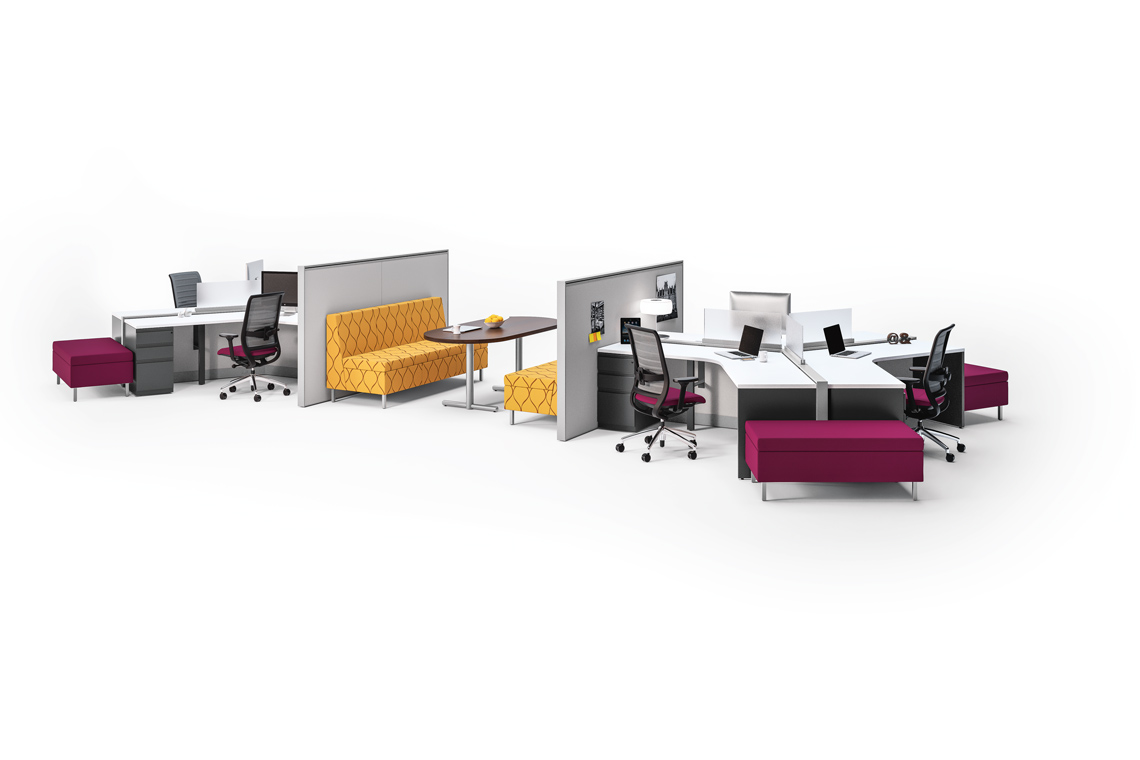(Pictured above: Kimball Office- the Footprint Collection )
Bench Applications
Simple, adaptable, efficient workbenches have been a withstanding feature in the workplace since the early 20s. Starting as crude wood tables out of necessity by artisans and crafters, this type of system has evolved into bench applications that are now clean, functional and sleek. Today, benching systems are modular and easily reconfigured to meet a variety of needs. Of these, the most fundamental is still the need for a central technology infrastructure that conveniently provides access to power. Secondly, benching has the ability to hold individual work tools while allowing face-to-face interaction.

(pictured above: The Blythe House Daily Totals)
The Benefits of a Modular Benching System
Benching systems continue to progressively address the needs of business owners. Their benefits are numerous including space efficiency, collaboration, productivity increase, flexibility and natural light permeation. On the occasion that mobile workers arrive in the workplace, they prefer to be seen during their time there. Connection with co-workers and technology remains quick. When aggressive changes continue to happen to the business model, modular benching systems allow for the structural parts to easily be disassembled, reconfigured and reassembled to meet these workforce changes.

(pictured above: Kimball Office Xsuede Collection)
Why Benching Systems are Working
Benching systems are made to work with today’s office changes by keeping the systems modular. Designers set up hybrid atmospheres where there are tuck away places for those times when a little privacy is preferred. Around 2010, the implementation of height-adjustable tables, low panel systems and mobile storage increased demand for these systems. Benching systems can be made to work for just about any type of workplace. A designer analyzes the team to seek the best benching environment layout for that particular team. Once the user profile is determined, the designer will put into place the best system that takes into account details about how a team needs to function to produce effectively and efficiently.

